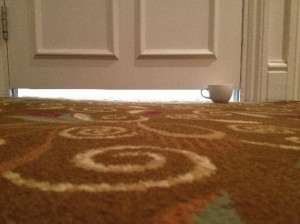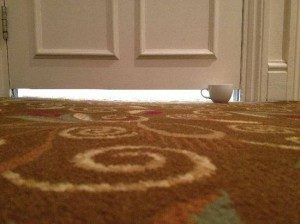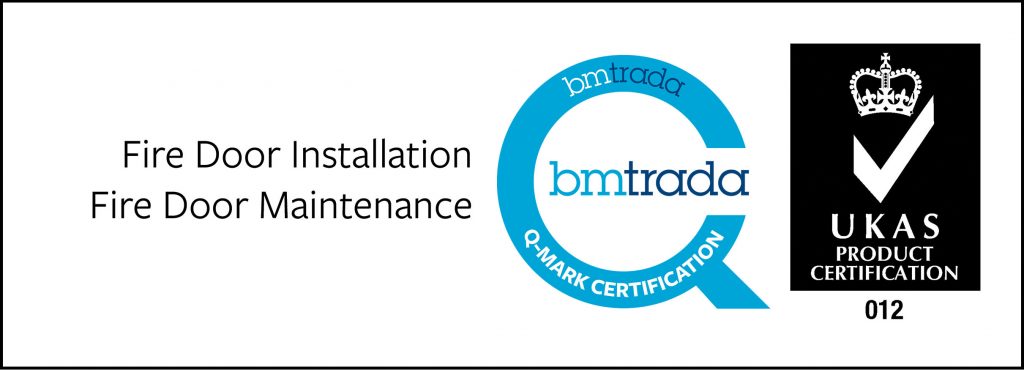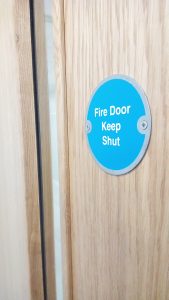Fire Door Maintenance on Listed Buildings
Situated in one of Ayrshire’s most enchanting beauty spots lies the historic Glenapp Castle. Dating back to the late 1800s, the castle was designed by the celebrated Edinburgh architect David Bryce. The property was built as a home for the future Deputy Lord Lieutenant of Ayrshire, James Hunter.
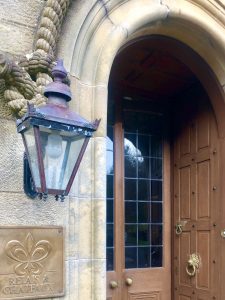
Built in the Scottish Baronial style, the castle combines elements of both the Gothic and Renaissance periods. The result is a castle of enduring beauty and grandeur. Fast forward to modern times, and after several owners and eventually falling into an unfortunate state of disrepair, Glenapp underwent years of laborious renovation and care to restore it to its luxurious best. Having been transformed into a hotel after its refurbishment, it has won a string of awards and been recognised as one of the finest luxury castle hotels in the UK.
The current owners have continued the improvements to the fabric of the building as well as the hotel. Glenapp Castle Hotel is now one of the finest examples of its kind to be found anywhere. Winner of “Independent Hotel of the Year” at the CIS Excellence Awards in 2019, it also holds the AA’s supreme accolade for hotels, regardless of size or type of operation – five red stars.
Glenapp Castle is also a member of two exclusive groups: The Relais & Château Group and the Pride of Britain Hotels. Needless to say, membership of these groups is dependent on the highest levels of service, exceptional cuisine, and unique, luxurious settings. Glenapp Castle offers these in abundance.
Heritage Scotland and Fire Protection
The most recent development involves upgrading a substantial part of the castle’s guest accommodation. The owners are at the forefront of ensuring the safety of both the guests and the castle itself. To do this, the fire protection had to be upgraded to modern standards.
Worksmart were approached by Glenapp Castle due to our specialist fire door and passive fire protection credentials and experience. Protected as a listed building, Glenapp Castle’s owners needed to ensure that all works had to be conducted with the utmost sympathy for the existing, historic fabric.
Worksmart were the ideal people to fulfil this brief. As accredited and experienced fire door and passive fire protection specialists; with a team of highly skilled, time-served tradespeople; while being sympathetic to the conservation aims and historic nature of the project.
Maintaining 19th Century Architecture on Listed Buildings

The ongoing project involves both the installation of new fire doors that are in keeping with the style and architecture of the late 19th century and the sympathetic upgrading and conservation of historically valuable doors to provide the required level of fire resistance. This in itself is a big challenge, and exactly the reason why Worksmart were appointed as contractor for the job.
The entirety of the castle’s fifth floor is also being upgraded to guest accommodation. It first had to be ‘compartmentalised’ to provide 60 minutes fire resistance. This included removal of the original floorboards, stripping out of obsolete services and deadening material and installation of new services before the painstaking construction of a bespoke fire barrier in the void to the latest passive fire standards. The original flooring, which had been carefully stored, was then replaced.
Fire Door Inspection Services for Historical Buildings
 We are working closely with the owners of Glenapp Castle, their interior designers, conservation surveyors, architects and services consultants to ensure the refurbishment is carried out to the standards expected of one of the country’s leading luxury hotels and we look forward to sharing updates on this beautiful project in our following blogs!
We are working closely with the owners of Glenapp Castle, their interior designers, conservation surveyors, architects and services consultants to ensure the refurbishment is carried out to the standards expected of one of the country’s leading luxury hotels and we look forward to sharing updates on this beautiful project in our following blogs!
Glenapp Castle’s owners are determined to apply the same level of attention to the conservation of this jewel of a castle as they do to their hospitality, whilst sympathetically refurbishing and upgrading to keep it alive and offer their guests an unrivalled experience in one of Scotland’s finest listed buildings. Collaborating with specialist conservation surveyors and Historic Scotland, we, at Worksmart, are delighted that our skills and expertise will play a part in delivering this prestigious and sensitive project
If you would to get in touch to find out more, please contact Mark McQuade at [email protected] or call 01563 53 55 11
In the meantime, feel free to browse our website.
You can find us on Twitter and LinkedIn with the following hashtags: ProtectingLivesPreventingLoss #Worksmartworksafe #Firedoormaster #MakeItWorksmart












